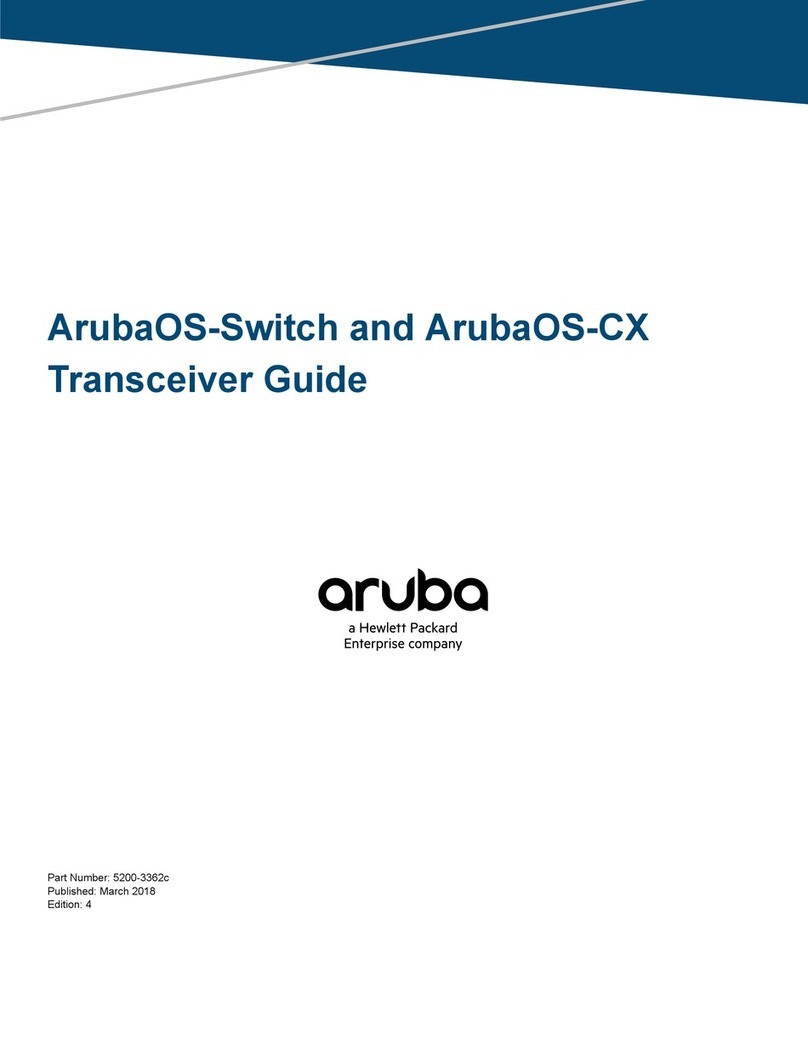
Chapter 1 Overview............................................................................................ 5
Conventions.................................................................................................................................................... 5
Note on product images.....................................................................................................................5
Port numbering in examples............................................................................................................. 5
Symbols................................................................................................................................................ 5
Types of transceiver modules and network cables.................................................................................... 6
Data rate...............................................................................................................................................7
Transmission distance........................................................................................................................ 7
Central wavelength............................................................................................................................. 8
Fiber...................................................................................................................................................... 8
Fiber types................................................................................................................................ 8
Fiber diameter........................................................................................................................10
Connector...........................................................................................................................................10
Optical parameters........................................................................................................................... 11
Copper transceiver modules.......................................................................................................................12
Transmission distance...................................................................................................................... 12
Connector...........................................................................................................................................12
Identication of 4x4 part numbers............................................................................................................ 13
Chapter 2 QSFP28 modules.............................................................................15
QSFP28 optical transceiver modules that use MPO connectors............................................................ 15
Models, specications, and compatibility...................................................................................... 15
QSFP28 optical transceiver modules that use LC connectors................................................................ 16
Models, specications, and compatibility...................................................................................... 16
QSFP28 DAC (copper cables).......................................................................................................................19
Models, specications, and compatibility...................................................................................... 19
Chapter 3 QSFP+ modules...............................................................................20
QSFP+ optical transceiver modules that use MPO connectors.............................................................. 20
Models, specications, and compatibility...................................................................................... 20
QSFP+ optical transceiver modules that use LC connectors...................................................................21
Models, specications, and compatibility...................................................................................... 22
QSFP+ DAC (copper cables)......................................................................................................................... 24
Models, specications, and compatibility...................................................................................... 24
QSFP+ 40G AOC (Active Optical Cable)...................................................................................................... 26
Models, specications, and compatibility...................................................................................... 26
Chapter 4 SFP28 modules................................................................................27
SFP28 optical transceiver modules............................................................................................................ 27
Models, specications, and compatibility...................................................................................... 27
SFP28 DAC (copper cables)..........................................................................................................................28
Models, specications, and compatibility...................................................................................... 29
SFP28 25G AOC (Active Optical Cable)....................................................................................................... 30
Models, specications, and compatibility...................................................................................... 31
Chapter 5 SFP+ modules..................................................................................32
Contents
Contents 3




























